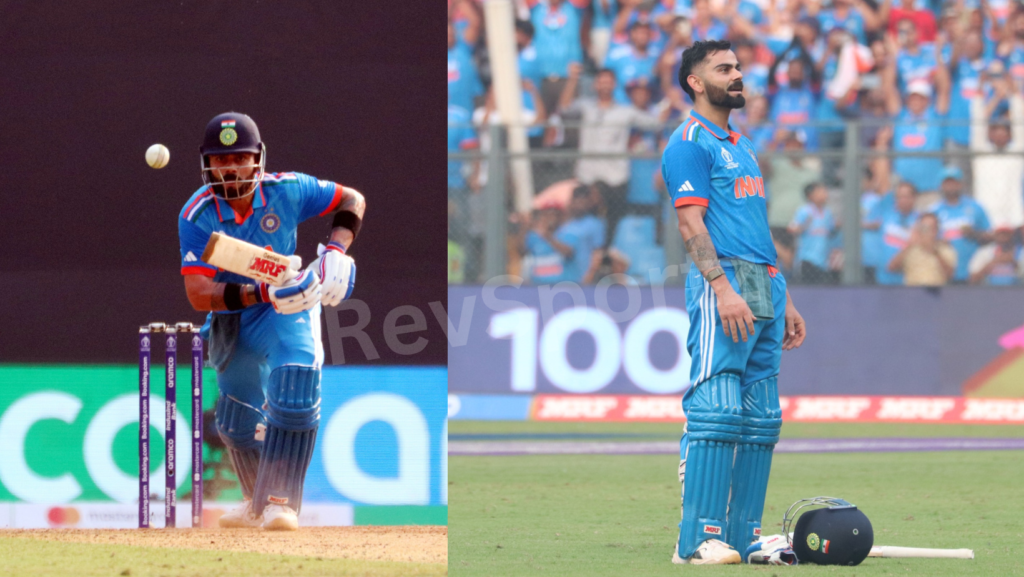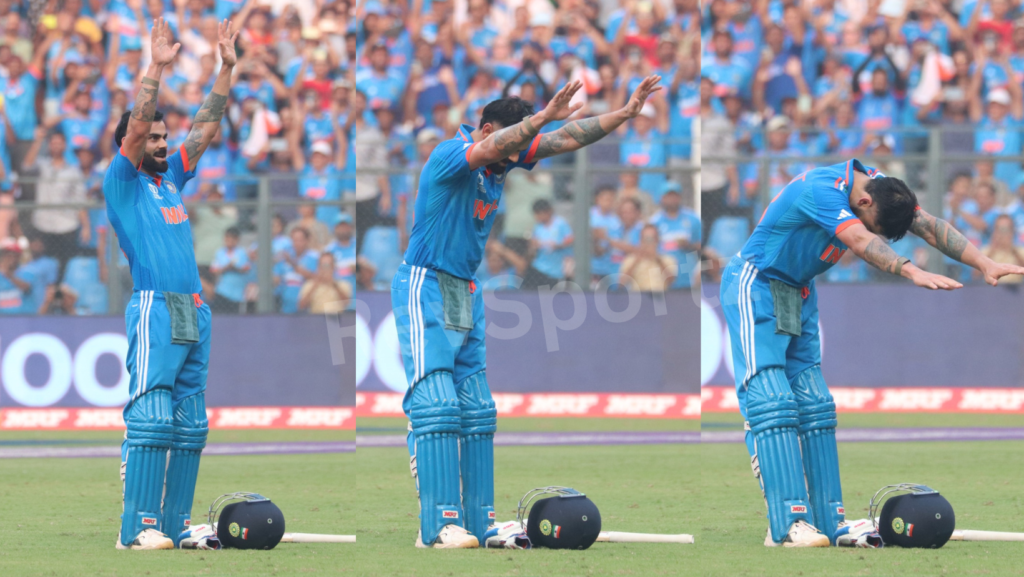
In the end, that unprecedented 50th ODI hundred came at the most appropriate venue – the Wankhede Stadium, where Sachin Tendulkar had been a ball boy during the 1987 World Cup, the first one that India hosted. Given how Virat Kohli had batted in the World Cup so far, it had always seemed a matter of when, not if. In any case, maybe we need to get over the century obsession. The late Peter Roebuck always used to say that Tendulkar’s greatest ODI innings wasn’t one of those 49 tons, but the 98 he scored under huge pressure in a World Cup run chase against Pakistan (Centurion, 2003). In similar vein, Kohli’s record-breaking hundred was made possible by Rohit Sharma’s dazzling 47 at the top of the order.
To understand the player Kohli is today, you perhaps have to go back to the summer of 2014. When he arrived in England, the sense of anticipation bordered on the unreal. And the hype was hardly unjustified. At 24, he already had six Test centuries to his name in 24 Tests, and as many as 19 ODI centuries. He was a World Cup winner and had been player of the tournament in the World T20 as India reached the final.
The Test series in England would be the worst phase of his career. Jimmy Anderson and Stuart Broad at the peak of their powers, a couple of spicy pitches, and increasing confusion over the location of his off stump. When he wasn’t nicking off to the slip cordon, Kohli was undone by the incoming ball. At the end of 10 innings across five Tests, he had just 134 runs.
Everyone had a solution for the gremlins that had crept into his game, even those who had never even held a washing paddle as a makeshift bat. An increasingly surly Kohli wasn’t about to listen to any unsolicited advice, even from ex-players. Instead, as soon as he was back in India, he sought out the one person whose opinion really mattered. Tendulkar watched him in the nets for hours, and suggested a tweak or two. A few months later, Kohli went to Australia and smashed four centuries in four Tests. He has seldom looked back.
These days, Kohli is associated with both quiet self-confidence and the swagger that comes so naturally to the greats. But it wasn’t always thus. The first time he met Tendulkar, his childhood hero, he was so tongue-tied he could barely say a word. Tendulkar had been asked to talk to the Under-19 squad that would represent India at the World Cup in 2008, and Kohli – who would go on to lead the side – mostly stayed in the background. The venue? The Wankhede.
The day India won that Under-19 World Cup, March 2, 2008, Tendulkar scored 117 not out against Australia in the first game of the Tri Series final. The headlines later that day were about some of the boys who might follow in his footsteps. But if you had suggested then that one of those kids would surpass Tendulkar’s tally of ODI tons, they would have been laughed out of a room.
That latter-day Tendulkar was something of a run machine. He didn’t quicken the pulse with thrilling shot-making as he had done in his Desert Storm heyday, but he understood his game like few others. In the ODI format, he had mastered the art of seeing off the potent threats and then cashing in. Whether it was Mohammad Asif’s cutters or Brett Lee’s pace, he always seemed to have the answer.

Like the Tendulkar he played with in the early years of his career, Kohli too has gradually cut out frills from his game. Even the risks he usually takes are calculated ones, shots played only after he’s assessed the percentages. His fitness and running between wickets are so exemplary that he knows he can go along at close to a run a ball without chancing his arm.
More than anything though, you know that Kohli is the true inheritor of the master’s legacy each time he walks out to bat. When Tendulkar made his entrance, the prevailing mood would change to: “Shh, the boss is batting.” The same sort of reverential hush, followed by bedlam, accompanies Kohli to the middle every time these days. As long as Tendulkar was at the crease, no cause was ever given up as lost. Kohli is that present-day insurance policy, the batter who allows fans to get through games with minimal palpitations.
Both Tendulkar and Kohli have spoken quite movingly about the day the master retired, and how a young Kohli went up to give him sacred threads that had once belonged to his father. After Tendulkar had fallen for 74 in his final Test innings, it was Kohli that faced the next ball. Inside a stadium – again the Wankhede – heaving with emotion, he was clear-eyed enough to lace a full toss through cover for four. Nothing illustrated the changing of the guard better than that one stroke.
Kohli was still struggling to establish himself in Delhi’s age-group teams the last time India beat New Zealand in a global tournament prior to this, in South Africa in 2003. He was captain when New Zealand edged India out in the 2019 World Cup semifinal, and at the helm when Kane Williamson and crew won the inaugural World Test Championship against India in Southampton. To say that he had unfinished business against the Black Caps would be an understatement.
Having bowled and fielded in exemplary fashion in Dharamsala in their league encounter, New Zealand unravelled rapidly in the Mumbai sun. Or maybe, that’s a harsh assessment. So brilliant was Rohit in that initial phase that no bowler was allowed to settle, with the audacity of some of the strokeplay bordering on the ridiculous. Whether it was the swing of Trent Boult and Tim Southee, the pace of Lockie Ferguson, or Mitchell Santner’s variations in pace and trajectory, nothing worked. The hand-grenade that Rohit dropped had seen to it that New Zealand were always playing catch-up.
But once again, one man remained steadfast. Whether it was piercing the off-side gaps with precision or clipping the ball in the arc between square leg and long-on with the ease of someone buttering toast, Kohli never looked perturbed. At no stage did it seem that he wasn’t in control of the situation or the task of batting New Zealand out of the contest.
Having learned from the master, Kohli now breathes the same rarefied air. There aren’t words to express just how lucky Indian cricket has been to have them both.



